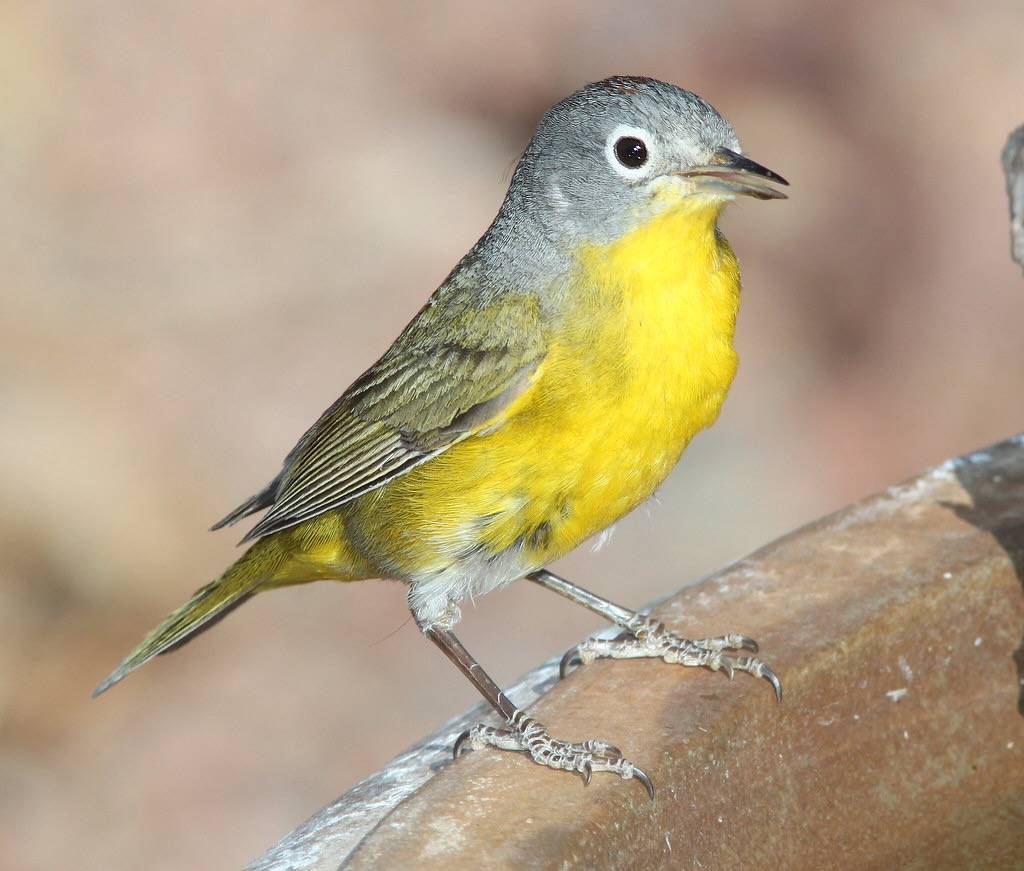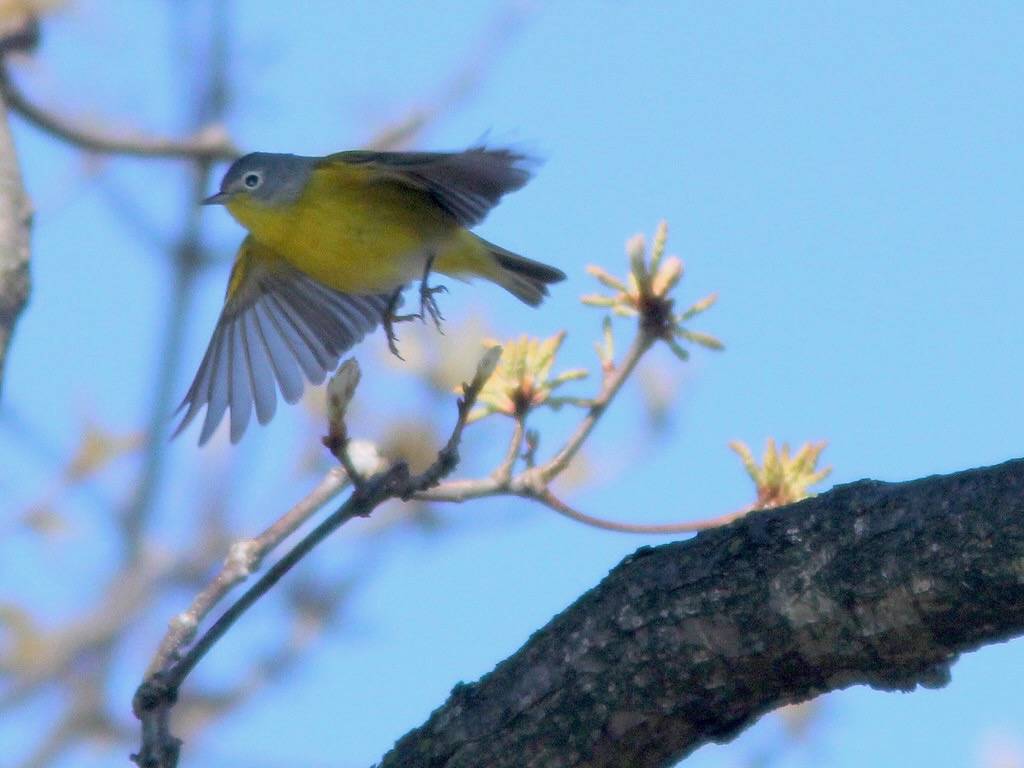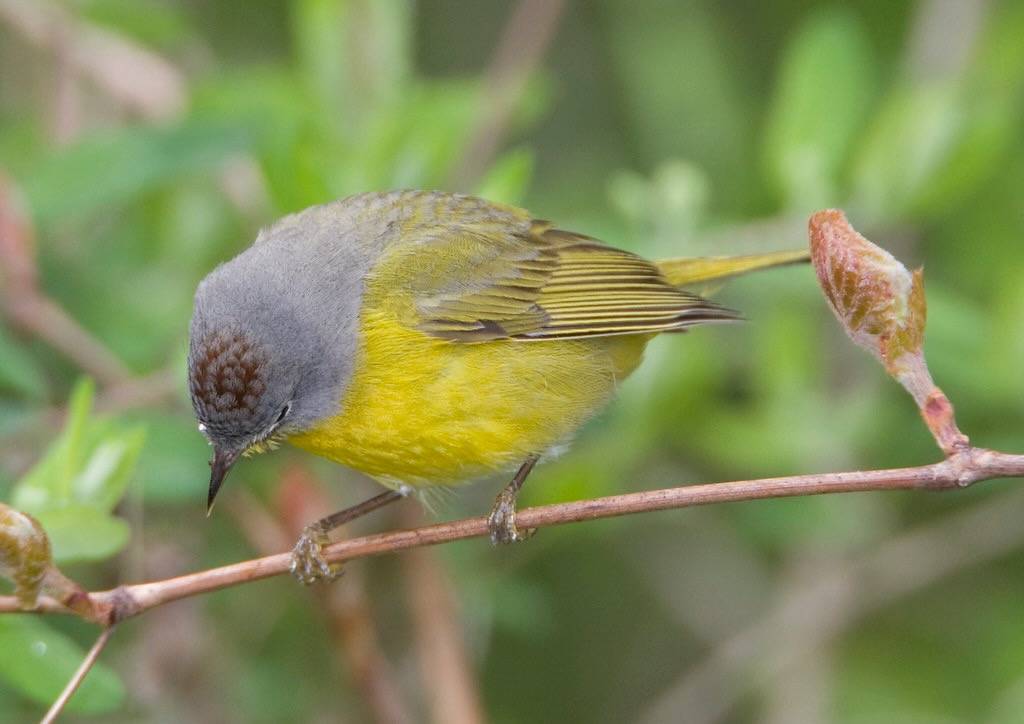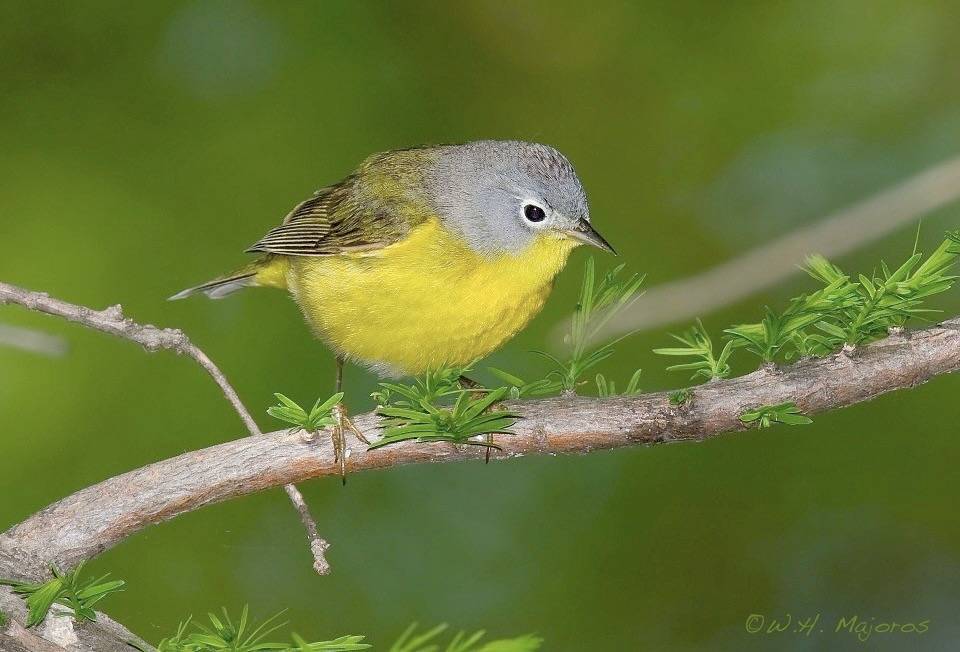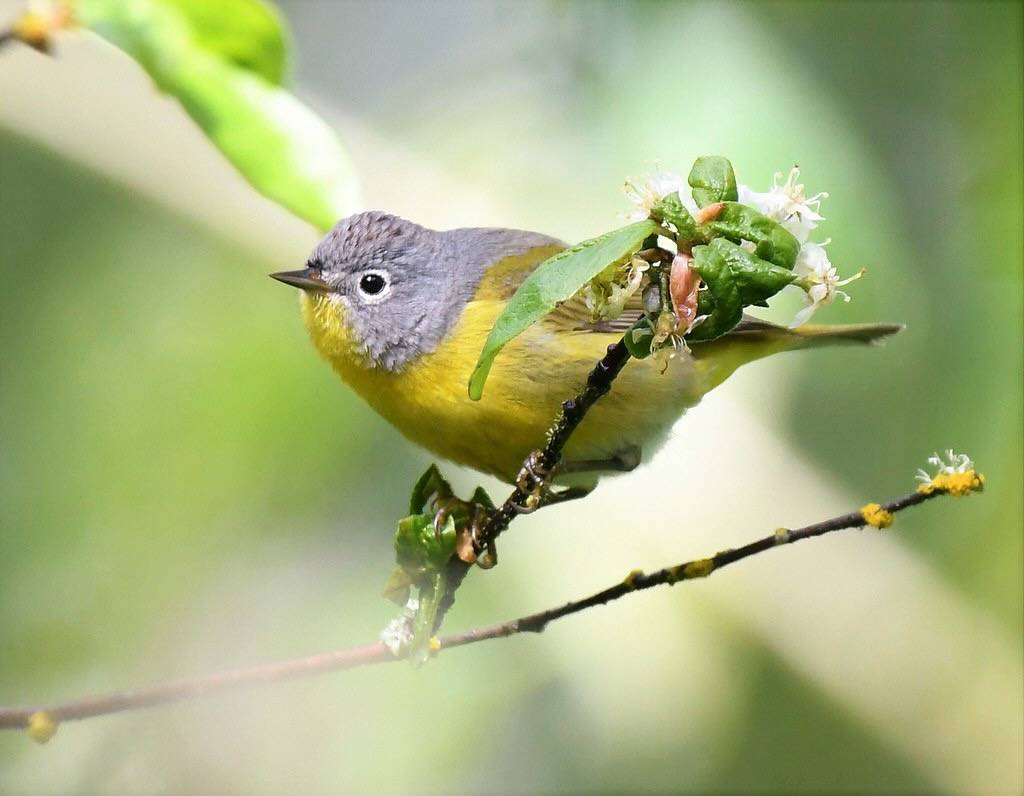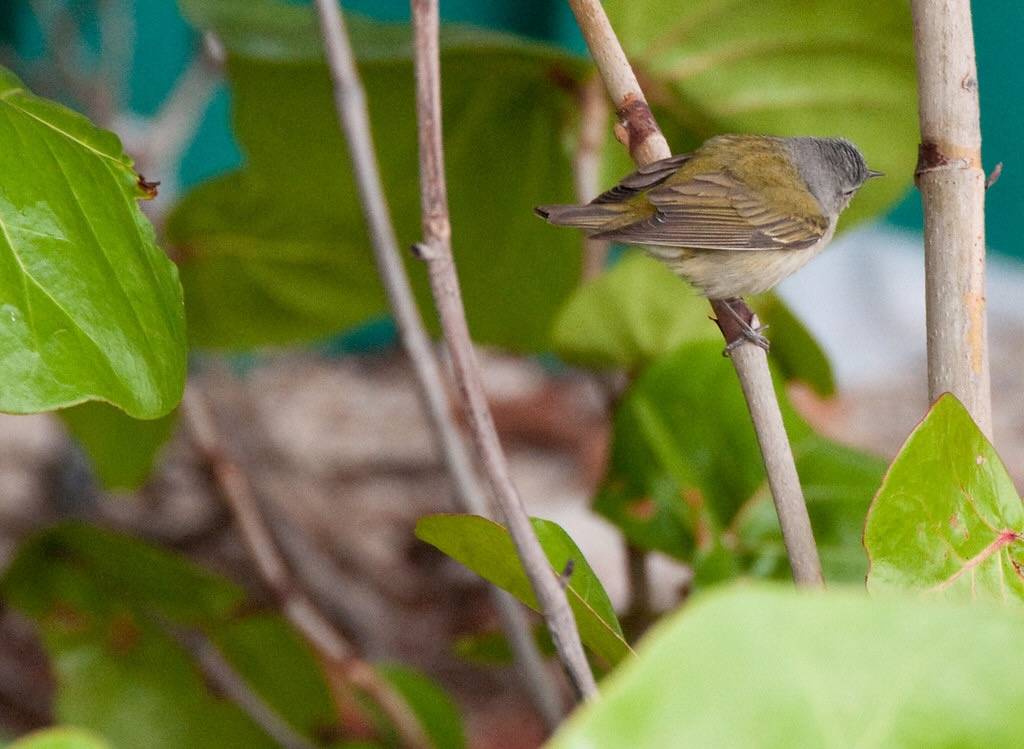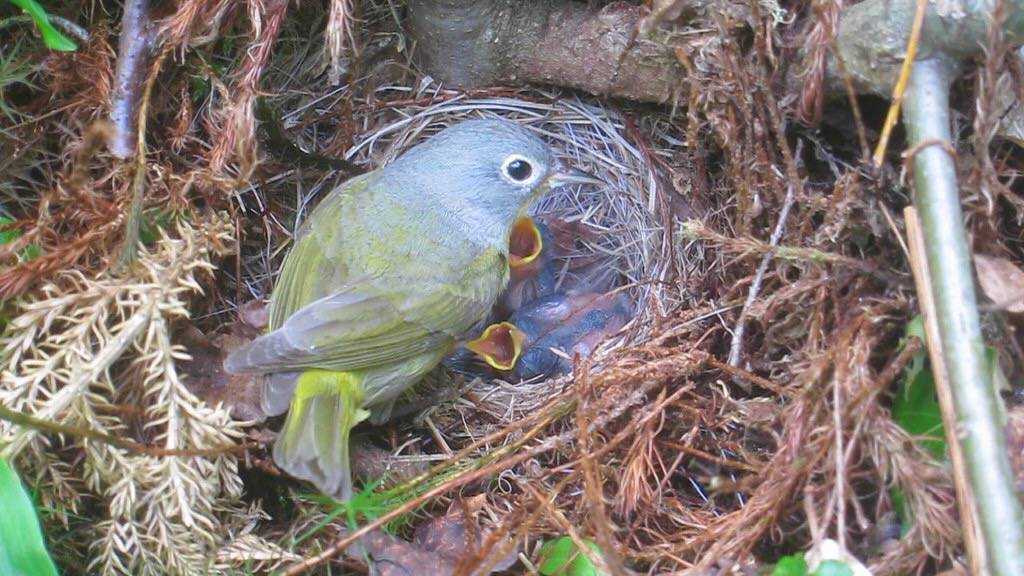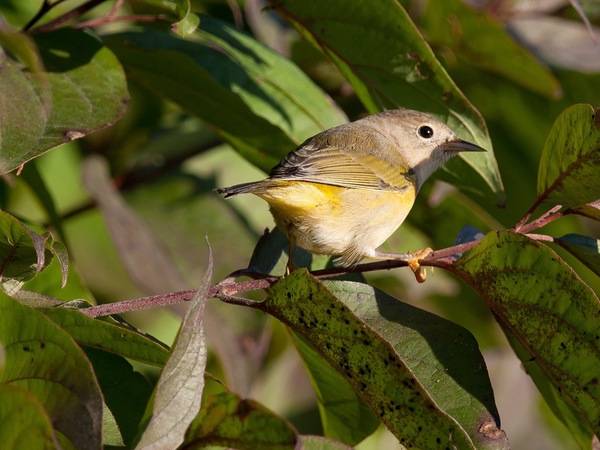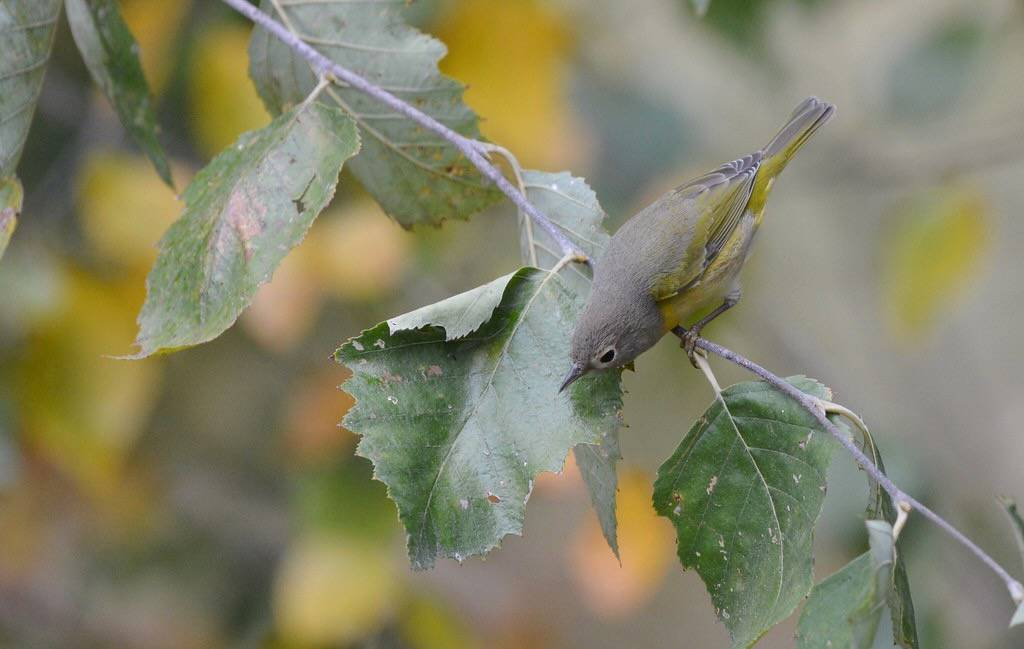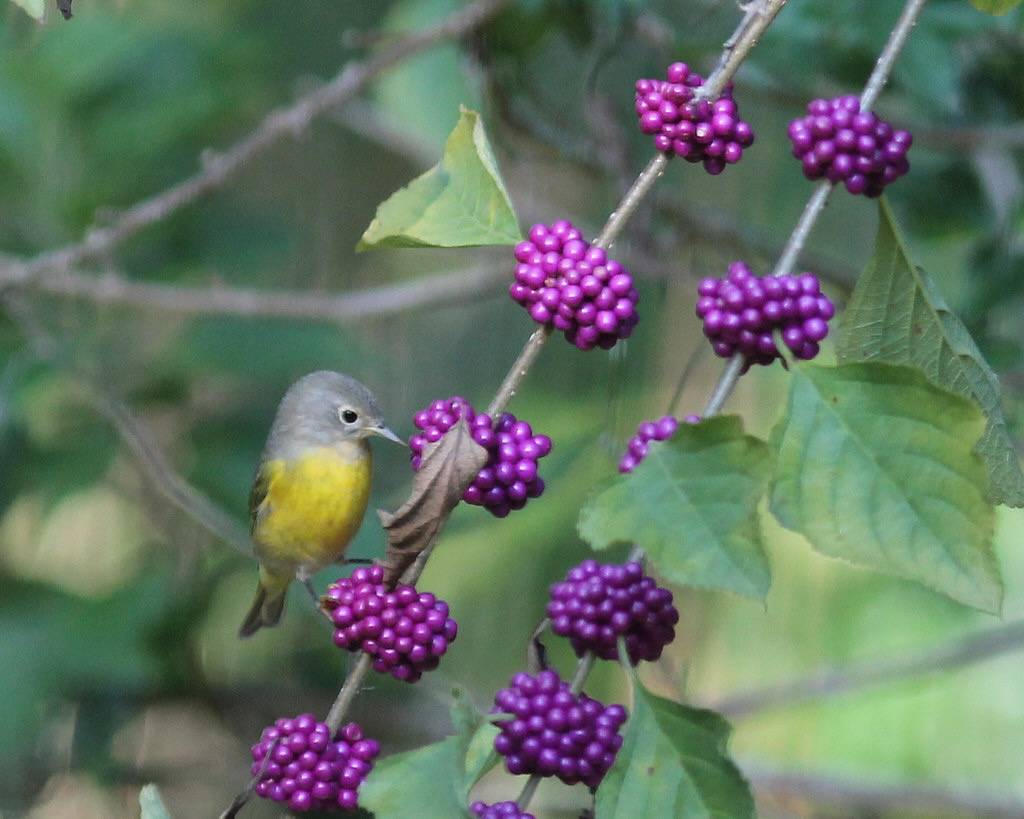Nashville Warbler
The Nashville Warbler was recorded for the first time at Salter Grove in mid-October of 2023. It was spotted in dense shrubbery at the southeast corner of Audubon Field, foraging with a small migrating flock of the more common Yellow-rumped Warbler.
Although it is named after Nashville, it does not breed in Tennessee and only passes through during spring and fall migration. It was a migrating individual that was first described and named there in 1811 by a pioneering ornithologist. This was at a time when bird migration was little known or understood.
The Nashville Warbler has a disjunct breeding range in North America. Populations nest in coniferous and mixed forests stretching from southeastern Canada and northeastern United States west to the Great Lakes region. It is absent from the glaciated mid-section of North America but then appears again to breed in a small area across several western states. It starts its fall migration later than other warblers, and winters from central Mexico to the northern parts of Central America.
The preferred habitat during migration resembles the shrubby, second growth forest habitat that it favors for breeding. Insects dominate its usual diet but nectar and small berries are consumed in migration.

